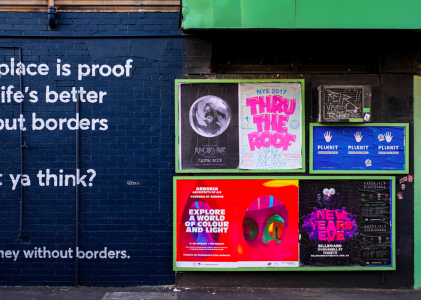Are you looking for a way to target potential buyers at the very bottom of the marketing funnel? Then look no further than in-market audiences.
In this guide, you’re going to learn everything you need to know about in-market audiences. We’ll cover how Google uses them to determine hungry buyers, and how to set them up in Google Ads to get started.
But wait, there’s more!™. You’ll also learn when and when not to use them, as well as some actionable tips to help you get the most out of your ads.
What are In-Market Audiences?
In-market audiences are groups of users that Google deems has a “high commercial intent” determined by past search history, as well as their browsing history. Google collects this data from websites that are part of their display network, collecting their interests based on the pages and content they visit. You can use them as a targeting option for your display ads, remarketing and YouTube ads.
These pages provide a glimpse into the products and services a user may be interested in. This means you can target those users who have a high purchase intent for what you offer. Here’s what a display ad using in-market audience targeting might look like “in the field:”

Let’s say a user is browsing review sites for different engagement ring jewelers. This indicates that the individual is interested in this product and, if you were selling engagement rings, could be a great potential customer for you.
This powerful machine learning technology allows you to target users without the need for keyword targeting. Unlike search campaigns, you target users based on signals, not queries typed into a search engine.
How Exactly Do In-Market Audiences Work?
Google has its own technology that collects data and distinguishes purchase intent in real-time. To determine whether or not a user is “ready to buy”, they factor in several variables, including:
- The topic/content of specific pages they visit
- How often they visit those types of pages
- Any conversions made during those visits
- Clicks on any related ads/accounts
Using these data points (and no doubt countless more), Google can determine users most likely to be interested in your products or services.
Benefits of In-Market Audiences
Now you know what in-market audiences are, why should you care? First of all, and as mentioned above, it extends your reach and puts your message directly in front of those who are most interested in what you have to offer.
They also differ from affinity audiences, which targets users based on general interests and their behavior across the web. In-market audiences, on the other hand, focuses on users who are at the bottom of a sales cycle or customer journey.
But because they’re ready to buy, it means that they’re more temporary than affinity audiences. Once they’ve purchased, they’ve likely fulfilled their need.
While the temporary nature of these audiences may spell bad news, it actually presents a terrific opportunity. Why? Because they allow you to target individuals who are ready to buy right now, without the need for manual or pro-active outbound efforts. Simply set up your campaign, measure your results and optimize. You can couple this with remarketing to strike for repeat purchases while the iron is hot.
But don’t just take it from us. A case study directly from Google’s mouth shows how Wayfair, a furniture retail brand, used in-market audiences to increase the response rates from their ads by 20%. Not only that, but they also “boosted short-term conversion behavior by 10–30%.”
A Word of Warning: The Downsides of In-Market Audiences
While this functionality brings more opportunity, there are some risks in jumping on the bandwagon without further planning.
For starters, you may find an increase in CPM/CPC when operating in certain markets. As the competition grows, you’ll be fighting for attention with other brands – especially in highly saturated markets. To combat this, make sure you tick the following boxes:
- Layer your targeting capabilities. In other words, target in-market audiences with demographics and geos to match your creative with what appeals to your similar audiences to yours
- Make your ad creative and copy too enticing not to click
- Create a well-optimized landing page primed for conversions
- Most importantly, have a superior product or service
If you truly understand your customer segments, you should be able to match your marketing message (e.g. purchase something) with their interests or behavior (e.g. beauty, travel etc.).
How to Get Started with In-Market Audiences
So, now you know what in-market audiences are and how they can bring a strong return from your display ad efforts. Now, let’s look at how to get them set up.
Start by logging into your Google Ads account and creating a new display campaign as normal:

As you progress, you’ll eventually come across the “Create your ad group” section. You’ll name your ad group, followed by who you want to reach. It’s here you’ll select your in-market audience(s). Select Browse > “What they are actively researching or planning:”

From here, browse through various verticals to find the best category or product that suits your offering:

For example, if you sell sunglasses, you’d browse to Apparel & Accessories > Eyewear > Sunglasses:

Remember, your targeting doesn’t have to stop here. If you have detailed customer personas, you can create campaigns based on the demographics of each of your customer segments.
3 Advanced Tips to Get The Most From In-Market Audiences
To wrap up this quick guide, let’s check out some practical tips you can use to get the most out of your in-market audience targeting.
1. A/B Test Against Other Targeting Options
In-market audiences bring the promise of capturing more attention at the bottom of the funnel. But that doesn’t mean it’s the holy-grail of SEM and PPC conversions.
So, be sure to test your ad creative, landing pages and overall customer journey across several targeting options. For example, if you traditionally use keyword-based targeting, duplicate some of your top-performing ad groups and run them using in-market audiences.
Run your experiment over time, measuring results once you’ve reached statistical significance. You can use this calculator by Neil Patel to calculate this:

2. Use Persona-Driven Creative
Depending on your niche and target audience, the competitive landscape to get your ads seen by in-market audiences can be fierce.
To cut through the noise, use ad creative that resonates well with the interests, beliefs and affinities of your target customer personas.
For example, this ad from Red Bull seems to be addressing a persona that values productivity and efficiency, likely those who are career-driven or work in high-pressure environments:

Instead of simply targeting those who have expressed interest in “energy drinks,” they use creative and copy that gets to the heart of their target audience.
Take a leaf from their book: don’t just focus on what you’re selling, make it about who you’re selling it to.
3. Use These Proven Copywriting Techniques
You should treat in-market campaigns like you would any display ad or YouTube advertising activity. This means getting basic persuasion and copywriting basics down.
Here, we’ve given you some quick tips you can use as a checklist when planning the creative of your ads:
- Let your customers do the talking: This is especially effective for service-based companies who depend on delivering results. Don’t just talk about what you do, show them the specific results you’ve got for a client. Bonus points if you use photography of the client within your ad creative
- Hook them with a deal: If you’re selling a physical or digital product, entice them to buy with an exclusive offer. This could be for a discount, or added bonuses that are available only for a limited time
- Create a sense of urgency: Speaking of “limited time,” spark some urgency by putting a time limit on your offer. Think along the lines of “Available until DATE,” or a timer that counts down to when your promotion is over
- Capture with a compelling call-to-action: The primary action your ads must elicit is a click. Which is where your call-to-action (CTA) must shine. Use a CTA with copy that focuses on a benefit, outcome or simply has some personality. It must communicate something that the user simply can’t not click on
Conclusion
In-market audiences give you an opportunity to get your name in front of hungry buyers – buyers who have shown interest in exactly what you have to offer.
But they may not be right for everyone. The first tip we listed above stems from traditional A/B testing. If you’re already targeting your audience at the bottom of the funnel and generating sales, then we suggest experimenting first.
Regardless of your approach, in-market audiences still present a huge opportunity. Use the best practices listed out in this guide and, when in doubt, follow Google’s official documentation.
Images:
Featured image: via Unsplash / Nicholas Green
All screenshots taken by the author August 2019
Image 1: via Kolau
Images 2, 3, 4 and 5: via Google Ads
Image 6: via Neil Patel
Image 7: via Red Bull



